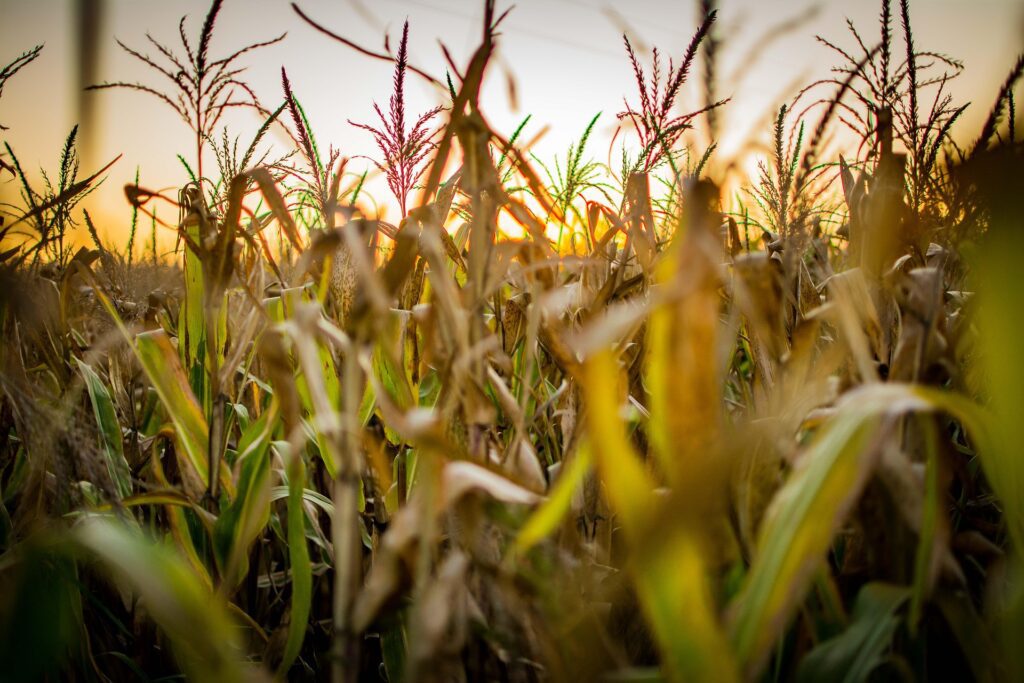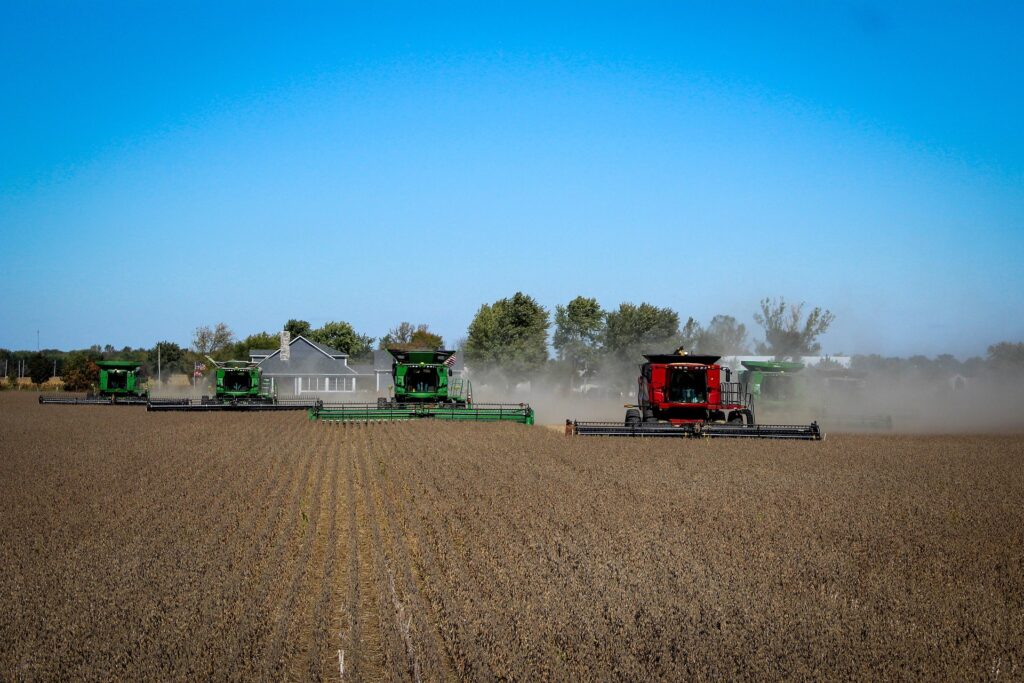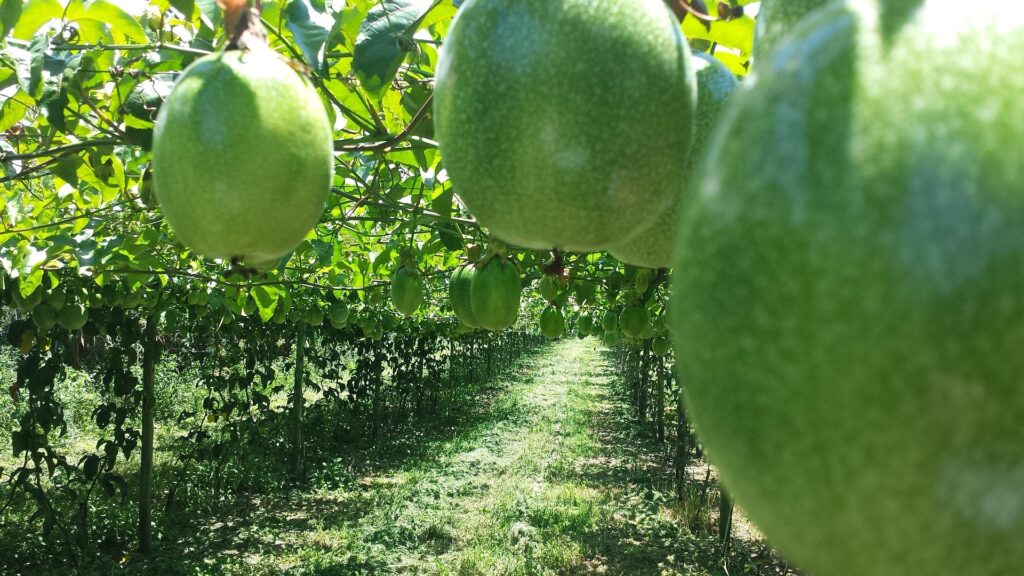Table of Contents
Introduction
Agronomy, the science dedicated to soil management and crop production, stands at the forefront of addressing some of the most pressing challenges faced by humanity today. As the global population continues to rise—expected to reach nearly 10 billion by 2050—the demand for food security and sustainable agricultural practices has never been more critical. This blog explores how mastering agronomy not only contributes to solving these challenges but also leads to personal fulfillment and professional success for individuals in this field.

Section 1: The Foundation of Agronomy
Historical Context
The story of agronomy is deeply intertwined with the history of human civilization itself. Agriculture, the practice of cultivating plants and animals for food, fiber, and other products, has allowed humans to transition from nomadic hunter-gatherers to settled communities, marking a pivotal shift in societal development1.
- The Neolithic Revolution (10,000 BCE): Agriculture was invented during the Neolithic era, also known as the New Stone Age1. Around 10,000 BCE, early humans began to domesticate plants such as wheat, barley, and rice, primarily in the Fertile Crescent, a region stretching from the eastern Mediterranean coast to the Persian Gulf21. The eight Neolithic crops were emmer wheat, einkorn wheat, peas, lentils, bitter vetch, hulled barley, chickpeas, and flax1. Evidence suggests that small-scale cultivation of edible grasses may have occurred as early as 21,000 BC by the Ohalo II people on the shores of the Sea of Galilee4.
- Early Civilizations and Agricultural Advancements (4000-3000 BCE): Ancient civilizations such as the Sumerians, Egyptians, and Romans made significant advancements in farming2. Irrigation systems were developed in Egypt and Mesopotamia to regulate river flow and ensure water availability for crops1. One notable irrigation system was the qanat, an underground canal tapping into underground streams1. Crop rotation and early forms of fertilization were also introduced2. By 6000 BCE, the Indus Valley was cultivating cotton and sugar in addition to wheat3.
- Improvements in Farming Implements (3000-1000 BCE): The Bronze Age saw the development of stronger farming implements due to advanced metalworking techniques1. This enabled more efficient soil tilling and increased agricultural productivity1. The moldboard plow and crop rotation were introduced during this period1.
- Medieval Period and Islamic Contributions: During this period, agricultural knowledge remained relatively static in Europe, though Islamic scholars made advances in agronomy2. Ibn al-‘Awwam, a 12th-century Andalusian agronomist, authored the Kitāb al-Filāḥa, a comprehensive guide on farming practices, crop management, and soil conservation2.
- The Renaissance: The Renaissance saw a renewed interest in scientific exploration, including agriculture2. Leonardo da Vinci and other scholars contributed to early agronomic theory, studying plant growth, crop rotation, and animal husbandry2.
- British Agricultural Revolution (1700s-1800s): This period marked significant agricultural productivity gains in Britain1. New methods of crop rotation and cultivation of previously unused land were introduced, along with new crops like the turnip1. The Dutch four-field rotation system (wheat, turnips, barley, and clover) was popularized by British agriculturist Charles Townshend in the 18th century4.This system allowed for year-round livestock breeding4. The use of clover was especially important as the legume roots replenished soil nitrates4.
- Evolution of Equipment and Technology (1800s-1900s): The introduction of agricultural equipment and machinery, such as tractors and mechanical harvesters, significantly increased farm efficiency and productivity1. GPS-guided tractors, drones, and sensors have been developed more recently to monitor soil and crop health1. Hybrid seeds have also been created through genetic engineering1. In 1837, John Deere invented the steel plow3. The first petrol-driven tractor was built in America by John Froelich in 18924.
- Scientific Advancements in Fertilization: John Bennet Lawes began the scientific investigation of fertilization at the Rothamsted Experimental Station in 18434. He investigated the impact of inorganic and organic fertilizers on crop yield and founded one of the first artificial fertilizer manufacturing factories in 18424.
- The Green Revolution (1940s-1960s): Led by scientists like Norman Borlaug, this revolution introduced high-yield crop varieties and modern farming techniques, helping to avert hunger in many parts of the world2.
- Late 20th Century and Sustainable Agriculture: Concerns over the environmental impact of industrial agriculture, such as soil degradation, water pollution, and biodiversity loss, led to a push toward sustainable agriculture2. Techniques include crop rotation, cover cropping, and integrated pest management, as well as efforts to reduce the use of pesticides1. The organic movement started taking root in 19723.
- Agricultural Biotechnology (1900s-present): Agricultural biotechnology involves using genetic engineering to improve crop yields and enhance plant traits1.Genetically modified organisms (GMOs) have been developed, but there is ongoing debate about their potential health and environmental risks1. Commercial cultivation of genetically modified plants began in 19963.
- The Future of Agriculture (present-future): The future of agriculture will likely involve the continued development and use of emerging technologies and innovations, such as robotics and artificial intelligence1. Precision agriculture, vertical farming, and agroforestry may also become more prevalent
Core Principles
Soil is the foundation of all crop production. Effective soil management involves practices that maintain and enhance soil health, which is crucial for sustainable agriculture. Key components include:
- Soil Testing: Regular soil testing helps determine nutrient levels, pH, and organic matter content, enabling informed decisions about fertilization and amendments.
- Nutrient Management: Understanding the essential nutrients required for plant growth and their interactions with soil properties is vital. Agronomists develop fertilization strategies that optimize crop yield while minimizing environmental impacts.
- Conservation Tillage: Practices such as no-till or reduced-till farming help preserve soil structure, reduce erosion, and enhance water retention.
2. Crop Selection
Choosing the right crop varieties is critical for successful agronomy. Factors influencing crop selection include:
- Climate: Different crops require specific climatic conditions for optimal growth. Agronomists assess local climate data to recommend suitable crops.
- Soil Conditions: Soil type and fertility play a significant role in determining which crops will thrive in a given area.
- Market Demand: Understanding market trends helps farmers select crops that are not only suitable for their environment but also profitable.
3. Crop Management
Effective crop management encompasses a range of practices aimed at optimizing growth and yield:
- Irrigation: Proper irrigation techniques ensure that crops receive adequate water without over-irrigating, which can lead to waterlogging and nutrient leaching.
- Fertilizer Application: Timely and balanced application of fertilizers is essential for maximizing crop productivity. Agronomists recommend specific fertilizers based on soil tests and crop needs.
- Pest and Disease Control: Integrated Pest Management (IPM) strategies combine biological, cultural, and chemical control methods to manage pests sustainably.
4. Environmental Stewardship
Agronomy emphasizes the importance of protecting the environment through sustainable practices:
- Crop Rotation: Rotating different crops in a sequence helps improve soil health, reduce pest pressure, and enhance biodiversity.
- Cover Crops: Planting cover crops during off-seasons prevents soil erosion, improves soil structure, and enhances nutrient cycling.
- Minimizing Synthetic Inputs: Agronomists promote practices that reduce reliance on synthetic fertilizers and pesticides, thereby minimizing environmental impacts.
5. Integrated Nutrient Management
This principle involves using both organic and inorganic sources of nutrients efficiently:
- Balanced Fertilization: Combining organic amendments (like compost) with inorganic fertilizers ensures that crops receive essential nutrients while improving soil health.
- Nutrient Recycling: Implementing practices such as composting or using green manures helps recycle nutrients back into the soil.


6. Pest and Disease Management
Effective pest control is critical for maintaining crop health:
- Integrated Pest Management (IPM): This approach combines various control methods—biological (using natural predators), cultural (crop rotation), mechanical (traps), and chemical (pesticides)—to manage pests sustainably.
- Monitoring and Forecasting: Regular monitoring of pest populations allows agronomists to implement control measures proactively rather than reactively.
7. Water Management
Proper water management practices are essential for optimizing crop production:
- Irrigation Strategies: Implementing efficient irrigation systems (e.g., drip irrigation) conserves water while ensuring that crops receive adequate moisture.
- Rainwater Harvesting: Collecting rainwater can supplement irrigation needs during dry periods.
8. Harvesting Techniques
The timing and method of harvesting can significantly impact crop yield and quality:
- Timely Harvesting: Harvesting at the right time ensures maximum yield and quality while minimizing losses due to shattering or decay.
- Post-Harvest Handling: Proper handling techniques after harvesting help maintain quality and reduce spoilage.
9. Adoption of Technology
Modern agronomy increasingly relies on technology to enhance productivity:
- Precision Agriculture: Utilizing GPS technology, drones, and sensors allows farmers to monitor field conditions accurately and apply inputs precisely where needed.
- Data Analytics: Analyzing data from various sources helps agronomists make informed decisions regarding crop management.
10. Sustainable Practices
Sustainability is a core tenet of modern agronomy:
- Agroecology: This approach integrates ecological principles into agricultural practices, promoting biodiversity and ecosystem services.
- Climate Resilience: Developing strategies to adapt to climate change impacts—such as drought-resistant crop varieties—ensures long-term agricultural sustainability.
Interdisciplinary Nature
Agronomy is inherently interdisciplinary; it draws from various fields to create a holistic approach to agriculture:
- Environmental Science: Understanding ecosystems and biodiversity helps agronomists make informed decisions about land use and conservation practices.
- Economics: Knowledge of market trends and agricultural economics allows agronomists to advise farmers on profitability and sustainability. Economic principles guide decisions related to resource allocation and investment in agricultural technologies.
- Technology: Advances in technology—such as precision agriculture, remote sensing, and biotechnology—are transforming traditional practices in agronomy. These innovations enable more efficient resource use and improved crop management.
Section 2: Educational Pathways in Agronomy
Degrees and Certifications
A career in agronomy typically begins with formal education. Many universities offer bachelor’s degrees in agronomy or related fields such as agricultural science or environmental science. These programs provide students with a solid foundation in the principles of agronomy while also exposing them to practical applications.
- Key Courses: Students study subjects like plant biology, soil science, pest management, agricultural economics, and environmental sustainability. Laboratory work and field studies are integral components of these programs, allowing students to apply theoretical knowledge in real-world settings.
Internships and Practical Experience
Hands-on experience is invaluable in agronomy. Internships with agricultural firms, research institutions, or government agencies provide practical knowledge that complements academic learning.
- Fieldwork Opportunities: Participating in field trials or community-based agricultural projects enhances understanding of real-world challenges faced by farmers. Internships often lead to networking opportunities that can result in job offers after graduation.
Continuous Learning
The field of agronomy is constantly evolving due to technological advancements and changing environmental conditions. Agronomists must engage in lifelong learning through workshops, seminars, online courses, and professional certifications to stay updated with the latest practices and innovations.
- Professional Development: Many organizations offer continuing education programs that help agronomists refine their skills or specialize in areas such as organic farming or sustainable agriculture practices.


Section 3: Career Opportunities in Agronomy
Diverse Career Paths
Graduates with a background in agronomy can pursue various career paths:
- Research Scientist: Conducting experiments to develop new crop varieties or sustainable farming practices is a primary role for many agronomists. Research scientists work at universities or government agencies focusing on improving food production efficiency while minimizing environmental impact.
- Agricultural Consultant: These professionals advise farmers on best practices for crop production, pest management, soil health, and resource conservation. They often conduct field assessments to provide tailored recommendations based on local conditions.
- Extension Agent: Working with local communities to educate farmers about new technologies and sustainable practices is a vital role for extension agents. They serve as a bridge between research institutions and farmers by disseminating information about best practices.
- Agribusiness Manager: Many agronomists find opportunities within the business side of agriculture by managing operations for agricultural companies or cooperatives that supply seeds, fertilizers, or equipment.
- Environmental Policy Advisor: Agronomists can also work within governmental or non-governmental organizations focused on developing policies related to sustainable agriculture practices or environmental conservation efforts.
Emerging Trends
The integration of technology into agriculture has opened new avenues for agronomists:
- Precision Agriculture: Utilizing data analytics and GPS technology allows farmers to optimize field-level management regarding crop farming. Precision agriculture involves monitoring crop health through sensors and drones while applying inputs like water or fertilizers only where needed.
- Biotechnology: Developing genetically modified organisms (GMOs) that can withstand pests or environmental stressors is another exciting area within agronomy. Biotechnology offers solutions for increasing crop yields while reducing reliance on chemical pesticides.
- Sustainable Practices: With growing awareness of climate change impacts on agriculture, there is an increasing demand for sustainable farming methods that conserve resources while maintaining productivity.
Impact on Society
Agronomists play a crucial role in addressing global challenges such as climate change, food security, and sustainable resource management. Their work directly impacts local economies by improving agricultural productivity and resilience against adverse weather conditions or pest outbreaks.
Section 4: Skills for Success in Agronomy
Technical Skills
To excel in agronomy, professionals must develop a range of technical skills:
- Data Analysis: Understanding statistical methods is essential for analyzing soil samples or crop yield data effectively. Proficiency with software tools enables agronomists to interpret complex datasets that inform decision-making processes.
- Soil Testing: Proficiency in laboratory techniques for assessing soil health ensures optimal growing conditions for crops. Regular soil testing helps identify nutrient deficiencies or contamination issues that need addressing.
- Crop Management: Knowledge of planting schedules, irrigation systems (e.g., drip vs. sprinkler), pest control methods (e.g., biological control), and harvesting techniques is critical for maximizing productivity throughout the growing season.
Soft Skills
In addition to technical expertise, soft skills are equally important:
- Communication: Agronomists must effectively convey complex information about farming techniques or research findings to farmers who may not have formal education backgrounds.
- Problem-Solving: The ability to identify issues quickly—such as pest infestations or nutrient deficiencies—and develop innovative solutions is vital in a field that faces numerous challenges daily.
- Teamwork: Collaboration with other professionals—such as ecologists, economists, engineers—is essential when working on interdisciplinary projects aimed at improving agricultural systems’ efficiency or sustainability.
Networking and Professional Associations
Building a professional network is crucial for career advancement within agronomy. Joining associations like the American Society of Agronomy provides opportunities for mentorship relationships with experienced professionals while facilitating collaboration on research projects or initiatives aimed at advancing sustainable agriculture practices.


Section 5: Personal Growth Through Agronomy
Connection to Nature
Working in agronomy fosters a profound connection with nature—a relationship that many individuals find deeply rewarding personally. Understanding ecosystems encourages individuals not only appreciate biodiversity but also recognize their role within it; this connection often leads greater personal satisfaction as they contribute positively towards environmental stewardship efforts through their work.
Problem Solving and Innovation
The dynamic nature of agriculture presents continuous challenges requiring innovative solutions from those working within this field daily; whether it be developing new pest-resistant crop varieties adapting irrigation systems during droughts—agrarians are often at forefront creating change benefiting both farmers consumers alike! This problem-solving aspect drives professional success while fostering personal growth through creativity resilience!
Community Engagement
Agronomists have unique opportunities engaging local communities directly; whether educating farmers about sustainable practices collaborating community gardens—they can make tangible differences people’s lives! Engaging communities builds strong ties enhances personal fulfillment service-oriented work where one sees immediate impacts efforts!
Conclusion
In summary ,agronomy represents not just career pathway—it’s pathway towards personal fulfillment professional success! By mastering principles underlying this discipline—through education practical experience skill development community engagement—individuals significantly impact both their lives society whole! As we look future agriculture amid global challenges like climate change population growth—the role agrarians will be more critical than ever!
I’ve always been fascinated by how games like Super Ace blend luck with a bit of strategy. It’s not just about spinning—it’s about timing and decisions, which makes the win feel more earned.